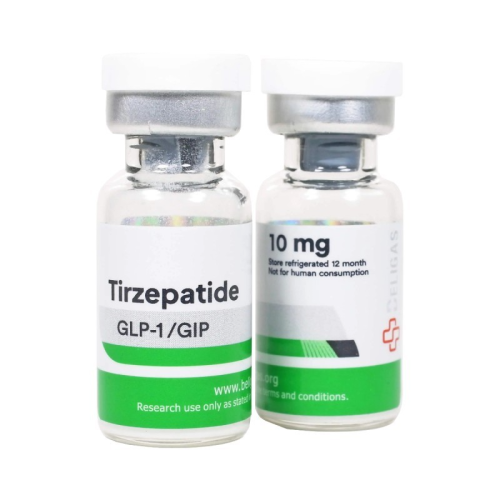Tirzepatide 10 mg
- Brand: Beligas - US
- Product Code: Tirzepatide 10 mg
- Availability: In Stock
-
$180.00
ACTIVE HALF-LIFE
5 days
CLASSIFICATION
Dual GIP and GLP-1 Receptor Agonist
MANUFACTURER
Beligas - US
WAREHOUSE
USA Warehouse 2
SUBSTANCE
GIP/GLP-1 RA
,
Tirzepatide is a synthetic peptide known for its ability to lower glucose levels. It functions by promoting both first- and second-phase insulin secretion and by decreasing glucagon levels, acting in a glucose-dependent manner.
Research has indicated that tirzepatide can slow down gastric emptying, decrease both fasting and post-meal glucose levels, reduce appetite, and contribute to weight loss in individuals with type 2 diabetes. Additionally, it has the potential to enhance insulin sensitivity.
The peptide is linked to a C20 fatty diacid through a hydrophilic linker at the lysine residue in position 20, allowing the drug to have a strong binding to plasma albumin, which extends its half-life.
Glucagon-like peptide-1 (GLP-1) receptors (GLP-1R) are found throughout the body, including in pancreatic beta-cells and the gastrointestinal system. They have been associated with the development of type 2 diabetes, as GLP-1R signaling plays a crucial role in managing glucose by increasing glucose-stimulated insulin secretion, slowing gastric transit, lowering plasma glucagon levels, and promoting weight loss through pathways that reduce appetite in the brain. Both glucose-dependent insulinotropic polypeptide (GIP) and GLP-1 are peptide hormones that aid in maintaining glucose balance, as they help stimulate insulin secretion from pancreatic beta-cells. However, GIP is primarily responsible for the insulinotropic response to food intake.
The precise mechanism by which tirzepatide operates is not entirely understood; however, its dual action on GIP and GLP-1R may be key to its effects on glycemic control and weight management. Studies have shown that administering GIP alongside a GLP-1R agonist leads to a more significant increase in insulin response and a greater suppression of glucagon secretion than when administering either hormone individually. Tirzepatide has a high binding affinity for both GIP and GLP-1R. In laboratory studies, tirzepatide demonstrates a receptor binding affinity for GIP comparable to that of native GIP, while it is five times less effective at binding GLP-1R than native GLP-1. Tirzepatide effectively activates the GLP-1R signaling pathway to promote glucose-dependent insulin secretion via either the GIP receptor (GIPR) or the GLP-1R. Nevertheless, further research is needed to clarify the role of GIPR activation in the drug's mechanism, as the available evidence regarding its impact on glycemic control and weight management from both preclinical and clinical studies remains inconsistent.

